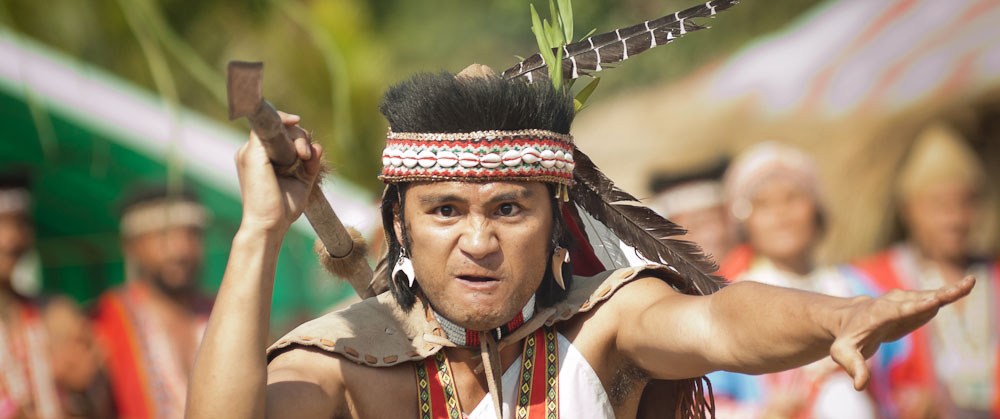Taiwan’s Culture & Festivals
Modern Taiwanese culture blends Chinese, Austronesian, Japanese, and Western influences. Because Taiwan never experienced Communist oppression, visitors have opportunities to witness traditional religious practices and ancient customs that have all but disappeared from the Chinese mainland. As a consequence, Taiwan is sometimes said to be ‘more Chinese than China’ while at the same time being ‘much more than Chinese’.
Families and ancestors
Taiwanese families are close-knit and extended. Most Taiwanese people stay close to their parents, even after they’ve married. According to tradition, the oldest son should bring his wife to live with him in his parents’ home. This is becoming less common, and not just because fewer people are getting married (and of those who get married, an increasing number are opting to remain child-free). Some women agree to marry only on the condition they won’t have to live with their in-laws. What’s more, modern career paths are making it more difficult to stay close to one’s hometown. Some newlyweds have little choice, because houses in the major cities are extremely expensive and salaries for many Taiwanese remain quite low. Young people fresh out of college seldom earn more than US$1,000 (GBP 788) per month.
Three generations living in a single household is still very common, especially in rural areas. Many parents offer their grown-up children a degree of support – some may see it as interference – that surprises Westerners. It isn’t unusual for parents to buy houses for their children or choose which subject their youngsters study at university.
Deference to those older than oneself means more making offerings of food and joss paper to ancestors and showing respect to one’s parents and grandparents. Younger siblings are expected to respect the opinions of their older brothers and sisters. Even in the case of twins, the one born mere moments earlier will throughout life be considered the ‘older brother’ or ‘older sister’. And rather than simply describe someone as a ‘cousin’, Taiwanese people use one of eight words, depending on whether he/she is older or younger, male or female, on the mother’s side of the family or on the father’s side.
For many ethnic Chinese, ancestor worship is more important than Buddhism, Taoism, or other faiths. Christianity’s opposition to ancestor worship is said to be a major reason why the faith hasn’t gained much ground in Taiwan. The key point of ancestor worship is that living descendants provide those who’ve passed away with the means for a happy existence in the afterlife. Ancestors are both loved and feared; if neglected by their sons or grandsons (daughters are expected to ‘marry out’ and make offerings to their husbands’ ancestors), they may deliberately harm their descendants. Ancestor altars can be found in many households, sometimes in the front living room, but often upstairs. Some lineages maintain sizeable shrines in which hundreds of forebears going back several generations are enshrined.
Festivals throughout the year
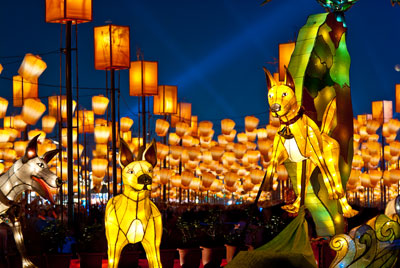
Many festivals are planned according to the traditional lunar calendar invented in China at least 3,000 years ago. Pious individuals depend on the calendar (which indicates both the point in the solar year and the phase of the moon) to know when they should burn joss paper and avoid meat.
Several major celebrations, such as Lantern Festival, build on customs migrants brought with them from the Chinese mainland. Lantern Festival concludes the Lunar New Year season, and gets its name from the colourful lanterns which bedeck temples and streets. In the days of yore, these lanterns were made of paper and bamboo, so small a child could carry one, and illuminated by a burning wick. Thanks to technology, they’ve grown much bigger and better. They may be any shape, larger than a house, and showcase state-of-the-art visual trickery. Taiwan’s national Lantern Festival is held in a different city each year, and lasts for several days.
Unmissable events unique to Taiwan
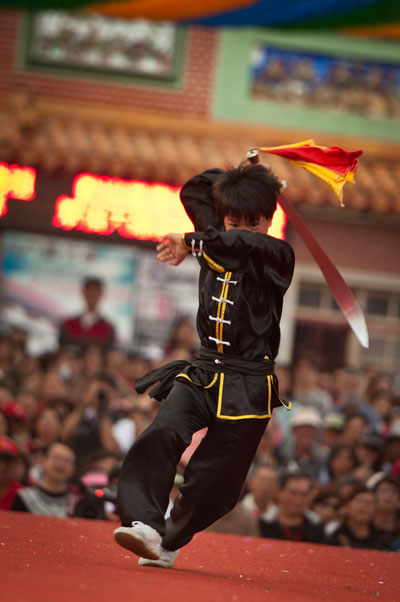
The festival, held each spring around the time of Guanyin’s birthday, celebrates the tradition of temple-affiliated militias. The tradition has been especially strong in Neimen since the late 17th century. Because Neimen was then dangerously close to indigenous tribes which occasionally raided ethnic Chinese villages, military skills passed down from father to son were useful useful. Battle-array members are expected to uphold core values such as physical strength, loyalty, and mutual support. Whether they’re engaged in ritualised dueling (swords may be used against axes, and umbrellas may be deployed in fights against those wielding hoes) or drilling, you can expect to see impressive coordination, suppleness, and speed.
The Qixi Coming-of-Age Ceremony grew out of a coming-of-age rite that’s been celebrated in Tainan on the seventh day of the seventh lunar month each year since the 18th century. Back when Taiwan was part of the Qing Empire, families celebrated when their son turned 16, because he then qualified for a full salary, not the half salary paid to those 15 or younger.
Tourists are welcome to witness the touching and highly photogenic ritual at Kailong Temple. Boys and girls (females are now allowed to take part) who’ve just turned 16 year crawl under an altar while dressed in special clothing, shoes, and hats. At the same time, their parents make offerings of duck, chicken, and red rice cake. Afterwards, some of the young people proceed on horseback to the city’s magnificent Confucius Temple to offer incense to China’s greatest philosopher.
 Mazu’s birthday
Mazu’s birthday
The 23rd day of the third month on the lunar calendar is Mazu’s birthday and a day of celebration in every part of Taiwan. Temples in which Mazu is the principal deity become hives of good-natured activity. However, the most remarkable expression of faith occurs a few weeks earlier, during the nine-day, eight-night Taichung International Mazu Sightseeing and Culture Festival. What used to be a mass pilgrimage has evolved into a multifaceted religious and cultural extravaganza.
The key event is a 350-km (217 miles) trek from Dajia in Taichung to Xingang in Chiayi and back again. Dajia’s main Mazu icon is carried the entire distance, while crowds of pious participants follow on foot. Along the route, believers crowd the road, hoping to gain Mazu’s blessing by either touching her palanquin or lying prostrate on the road ahead of the procession so the icon is carried over their bodies. A million or more people join in, and the festival is said to be largest religious gathering in the world outside India.
Temple parades
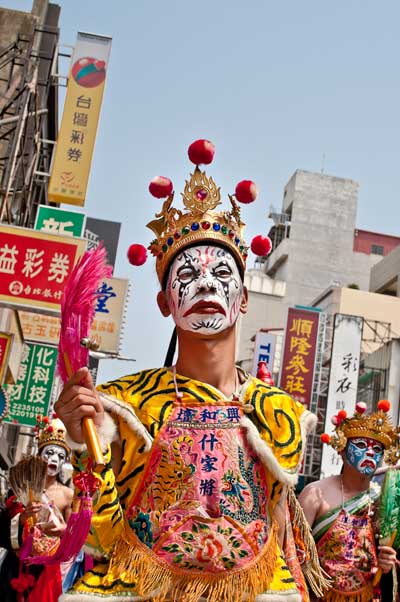
A typical inspection parade begins and ends at a temple, and involves transporting an effigy in a palanquin. This may be a wooden sedan chair, or even an ornate wheeled buggy equipped with flashing LEDs and loudspeakers.
The god is preceded and followed by men and woman carrying banners and placards or playing gongs, pipes, and huge drums. As the deity inspects his earthly domain, frequent stops are made to bless individual businesses or households. At each halt, strings of firecrackers are detonated, joss paper is burned, and fireworks launched into the sky – even when the beauty of the pyrotechnics is lost because of bright sunshine. Once those rites have been completed, the parade moves on.
The most eye-catching participants are known as zhentou. These performance troupes (nowadays some are professional, but the majority are amateur) wear fabulous attire, walk on stilts, and perform acrobatics. The best known are the Bajiajiang, usually translated as the ‘Eight Generals’. The eight members represent four ‘infernal generals’ plus the four seasonal gods of spring, summer, fall and winter. The vaguely menacing attitude they show when swaggering along the street is heightened by the ritual weapons they carry. Every aspect of their appearance is decreed by tradition, and their clothing and makeup is a photographer’s dream. Until recently Bajiajiang performers were always young men, but demonstrating there’s some flexibility within popular religion, at least one female Bajiajiang troupe now makes regular appearances.
Indigenous festivities
The Austronesian tribes who live in the western part of the island have long been exposed to Chinese culture. Nevertheless, they’ve still managed to preserve a considerable amount of their culture, and regard festivals as both important opportunities to showcase their arts and customs to outsiders while transmitting their traditions to younger generations.
One of the most accessible events is the Ear-Shooting Festival. This is the Bunun people’s most important celebration and it’s known as mala-ta-ngia in the tribe’s language; its historical links with the tribe’s hunting culture are obvious from its name. Held in south Taiwan in late April or early May, the festival gets its name from displays of archery skills in which tribesmen shoot at animal ears nailed to a post. That’s just one aspect of the event, which now includes contributions from neighbouring tribes plus traditional aboriginal food.
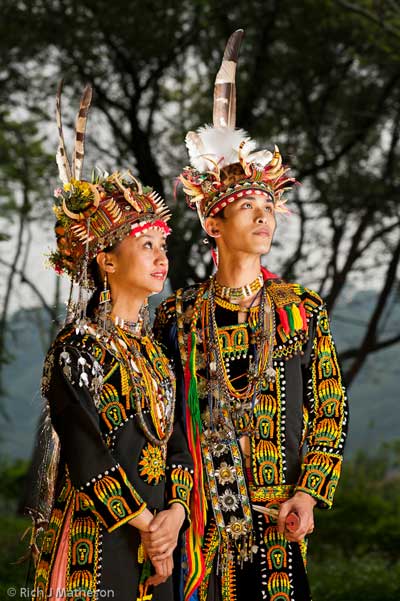
The Mgay Bari is the major annual festival of the Truku tribe, who live near Taroko Gorge. Originally, the core of the event was offering sacrifices to their ancestors, but in the past decade the festival has evolved into a general celebration of tribal culture. Truku myths and legends are retold through traditional songs and dances, so it’s a fascinating experience for world-music enthusiasts. Indigenous arts and handicrafts are sold during the festival, and you’ll not hear any angry word from anyone – for the duration of the Mgay Bari, quarreling and fighting are strictly taboo.
For the indigenous people who live on Orchid Island, flying fish is a traditional foodstuff of great cultural as well as nutritional importance. Fishing is done in beautiful hand-built wooden boats, the construction and use of which is surrounded by customs and taboos. Islanders begin fishing in late spring, but only after they’ve held a sacred ceremony which they believe will attract the fish. Men sing; woman clap. The catch is shared out by type in accordance with custom. Black flying fish, for instance, are a particular favourite and thus saved for esteemed visitors.
Attending a Taiwan festival
Certain festivals are surrounded by taboos which limit the attendance or participation of outsiders. At others, everyone is welcome, but the sheer number of visitors can make arranging transport and accommodation difficult. If there’s a Taiwan festival you’d especially like to see, contact Life of Taiwan today. Our expert travel planners can create a tailor-made itinerary packed with utterly delightful and truly unforgettable experiences.


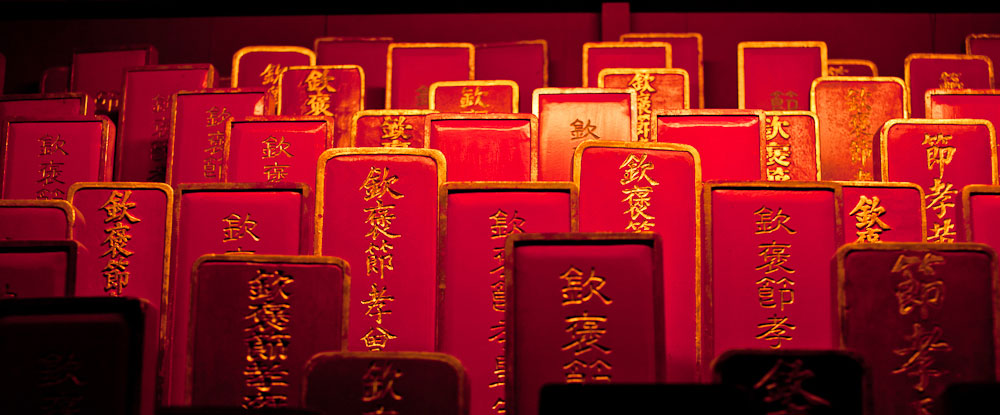
 Mazu’s birthday
Mazu’s birthday